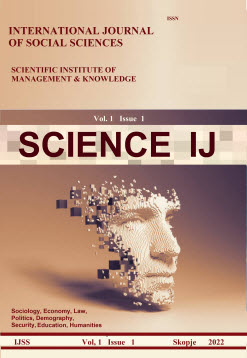LEADERSHIP IN TIMES OF CRISIS
DOI:
https://doi.org/10.35120/sciencej020119dKeywords:
leadership, organization crisis, crisis management, leadership during crisisAbstract
Leadership encircles the capability of an individual, group or organization to guide others (individuals, teams, or whole organizations). True leadership requires a personality that attracts other people, constant development of relationships with team members, possessing professional and practical knowledge and skills, experience, self-confidence, intuition and empathy. Strong leaders continuously empower other people, because they believe in their team members. Leadership skills are continuosly learned and improved not only during professional development, but throughout person’s life. Crises are inevitable events, that occur sooner or later in all the organizations. They can be triggered by different internal or external factors. Each crisis is specific and unique and requires different approaches for finding solutions. When a crisis occurs, ignoring or avoiding it, is one of the biggest mistakes for the organization. It should be accepted, resolved and used to initiate change, which is necessary for organzations’ survival and further development and growth. Having an organized, planned and structured approach to crisis management can help in damage reduction, restraing the company losses and discover inventive mechanisms to maintain the workforce’s productivity. Crisis leadership is a process that resolves the unforseeable events that happen unexpectedly and have the ability to diminish the organizational structure, to cease growth and development and lead to catastrophic outcomes. Whether the crisis will be successfully resolved, depends on how the leadership will deal with the situation. A positive approach to crisis is to accept it as an opportunity, to take responsibility, manifest confidence and implement changes which will streghtehen the organization and empower the employess to perform better and become stonger people in future. If leaders are bold and act, if they are decisive and willing to adapt their decision to the occurring conditions, they are going to have more success in resolving the crisis, compared to leaders that choose to wait and not take any action. Leadership is a vital process at all times, but when a crisis strikes, a strong leader has cardinal importance for the organization.
Downloads
References
Brown, B. (2018). Dare to Lead: Brave Work. Tough Conversations. Random House
Coyle, D. (2018). The Culture Code: The Secrets of Highly Successful Groups. Bantam
Chandler, R.C. (2005). Crisis Communication Planning: Sustaining Effective Corporate Communication During Disasters, Emergencies, and Critical Events. Richard L. Arnold
Gaunt, D. (2019). Ego, Authority, Failure: Using Emotional Intelligence Like a Hostage Negotiator to Succeed as a Leader. New Degree Press
Goleman, D., Boyatzis, R.E., & McKee, A. (2016). Primal Leadership: Unleashing the Power of Emotional Intelligence. Harvard Business Review Press
Goodwin, D.K. (2018). Leadership: In Turbulent Times. Simon & Schuster
Horowitz, B. (2014). The Hard Thing About Hard Things: Building a Business When There Are No Easy Answers. Harper Business
Kouzes, J.M. & Posner, B.Z. (2012). The Leadership Challenge: How to Make Extraordinary Things Happen in Organizations. Jossey-Bass
Mackey, J., Mcintosh, S., & Phipps C. (2020). Conscious Leadership: Elevating Humanity Through Business. Portfolio
Martin, R.L. (2022). A New Way to Think: Your Guide to Superior Management Effectiveness. Harvard Business Review Press
Maxwell, J.C. (2022). The 21 Irrefutable Laws of Leadership: Follow Them and People Will Follow You. HarperCollins
Northouse, P.G. (2018). Leadership: Theory and Practice. SAGE Publications, Inc.
Rumelt, R.P. (2022). The Crux: How Leaders Become Strategists. PublicAffairs
Sinek, S. (2017). Leaders Eat Last. Brilliance Audio
Wooden, J. & Jamison, S. (2005). Wooden on Leadership: How to Create a Winning Organization. McGraw-Hill
Downloads
Published
How to Cite
Issue
Section
License
Copyright (c) 2023 Marija Dimitrovska, Liljana Pushova Stamenkova, Lazar Stošić

This work is licensed under a Creative Commons Attribution 4.0 International License.






